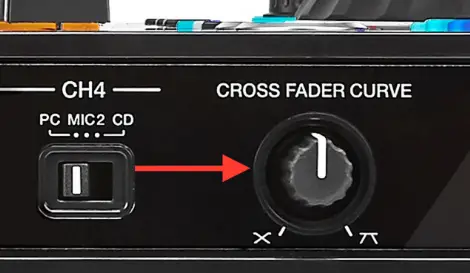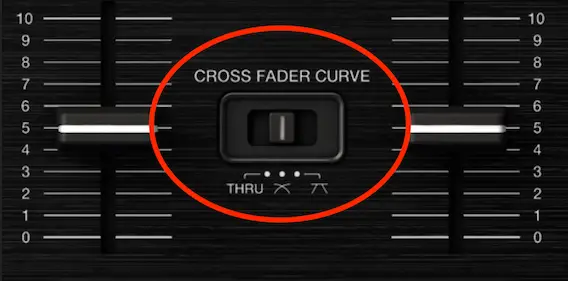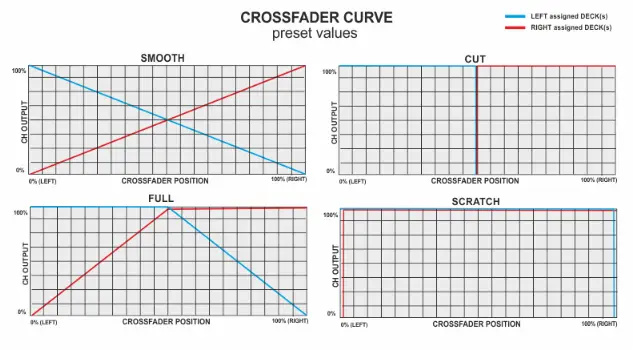You get your brand new controller or mixer out of the box and when you get down to businesss and you notice that the crossfader is terribly loose and wobbles around quite easily. But why is that? There is a quick answer for this question!
Why is a crossfader always more loose than mixer faders?
The crossfader will generally always be much more loose than other mixer faders present on your mixer or controller and the loose crossfader doesn’t mean that your unit is faulty!
This is mainly because the crossfader is a part of the mixer that is used for scratching – this means that it cannot give any significant resistance to the finger movement to enable you to quickly cut off the sound by flicking your fingers against it during the scratch routine. The looseness of the crossfader is also proven useful with many other mixing techniques such as beat juggling, drop mashups and acapella vocal chopping.
Crossfaders are meant to move way smoother than the regular mixer faders.

The light movement of the crossfader makes it easy for you do really fast sound cuts that are necessary for almost all scratching techniques. Your crossfader is moving much easier than the mixer faders and that is to assure that you will be able to perform very fast movements that are essential to cut off the sound in the right way during the scratching process.
What is a crossfader curve?
Every crossfader has a so-called “curve”. It’s used for defining a behavior of the crossfader control during its full movement cycle. It does not affect the physical movement of the crossfader but rather how the music will react to that movement as you shift the fader from one channel to another.
The general border settings are the slow and the fast setting:
When the crossfader is set to a “slow” curve moving it will gradually fade between the tracks playing on the opposite mixer channels and when the crossfader will be in the middle position both channels will be playing simultaneously at 100% volume. This setting can be used for transitions however it’s strongly advised to learn mixing using main mixer faders before attempting to use the crossfader for transitions.
When the crossfader is set to the “fast” setting there is a huge zone in the middle of the fader movement in which both tracks will be playing with equal volume and the very last milimiters of the crossfader range both on the right side and the left side will jump to the track on the corresponding channel instantly. This setting is the one used for scratching.
There are more advanced crossfader curve shapes, but those two are the main ones you will most probably come in contact with on modern devices.
The crossfader curve usually can be adjusted somewhere on your mixer or dj controller or in the software. On some Pioneer DJ controllers featuring a mixer that also functions as a standalone device (for example the SX series) the curve control knob or switch is located in the front part of the device alongside with mixer input controls or at the top of the mixer surface. If you are using a mixer to control your software (Rekordbox, Serato, Virtual DJ and so on) you might find your crossfader curve settings also in the options menu .


The crossfader’s “curve” can be set up manually on many devices.

When you begin your DJing journey it’s important to remember that if you leave your crossfader on the fast setting and you happen to move it fully to the wrong side by accident during your mix (for example with a piece of your clothing) you might cut off your playback or involuntarily move to another track. If you are starting out and you don’t use the crossfader for scratching yet keep that in mind and try to keep it on the slow setting.
Can a crossfader be replaced?
On many modern standalone mixers the crossfader is fairly easily replacable. Some dj controllers also enable you to replace the crossfader just as easily. Most of the times on devices that allow the replacement of the crossfader there will be two screws on the sides of the crossfader. When you unscrew them you will be able to remove the crossfader and replace it with a new one compatible with your device. Generally it’s meant to be a part that is the easiest one to replace on your console after trivial things like control knobs or fader caps. Be sure to consult your device’s user manual and check your warranty before attempting a repair or replacement by yourself.

Should I mix and do transitions using the crossfader or the main mixer faders when I start out?
It is generally advised to start out learning how to transition between songs using the main mixer faders rather than moving from song to song using only the crossfader and channel faders set to 100%. This generally gives you more flexibility and you will find yourself doing that a lot more often later on. There are some techniques that can be done exclusively with the crossfader (beat juggling, scratching, drop mashups) but most of the standard mixes can be done with using only the mixer faders.
The moving mechanical parts of your mixer such as the faders and the cross fader and all the other sensitive parts of dj equipment need to be cleaned and kept in a good shape to function properly. Check out our short and straight-to-the-point article on what cleaning agents you can use to clean your device!


